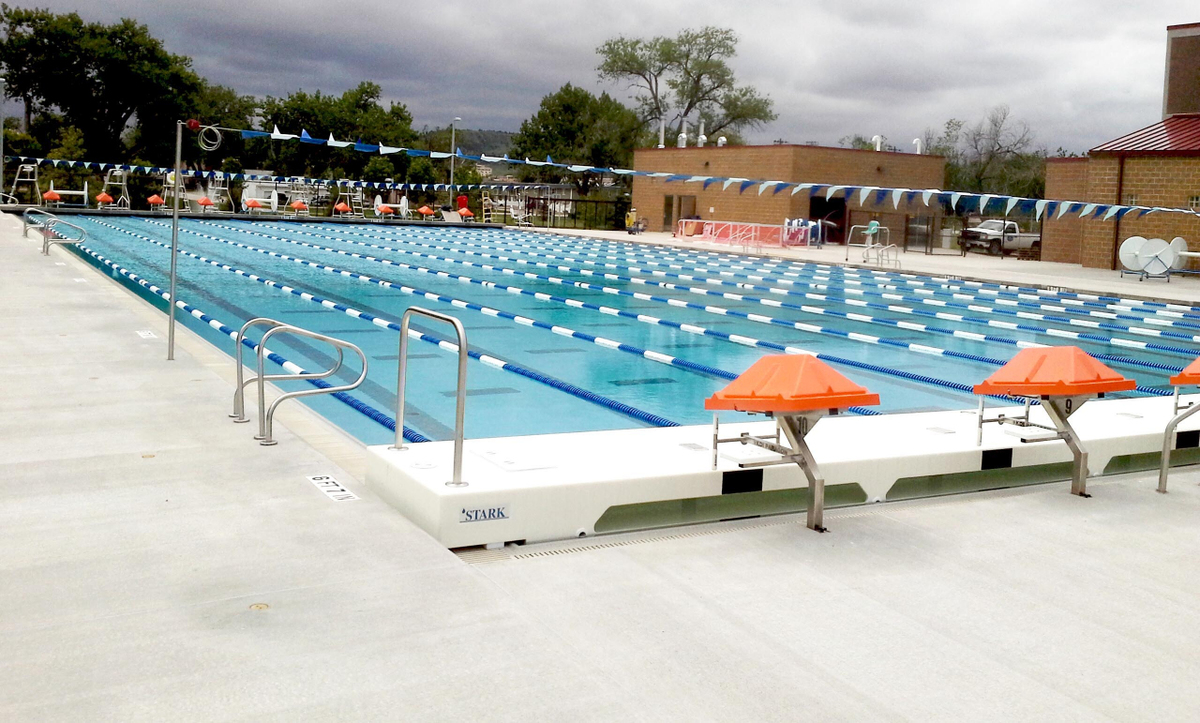|
Public pools and spas bring people of all ages and abilities together and, therefore, are designed to be an inclusive space. Swimming, exercise, therapy, relaxation, and water play are all activities that can take place in a pool and/or spa and, thanks to innovative design features and access equipment, people of all abilities are able to participate in these activities in the same body of water.
To make an aquatic facility more accessible, it starts during the design phase. In fact, many provinces and states have made significant changes to building codes when it comes to addressing ease of access to public facilities. For instance, amendments to building codes in Ontario require barrier-free access to, and around, all public pools and some spas. That said, there are several ways to design/build or renovate an aquatic facility to make it more accessible.
RAMPS
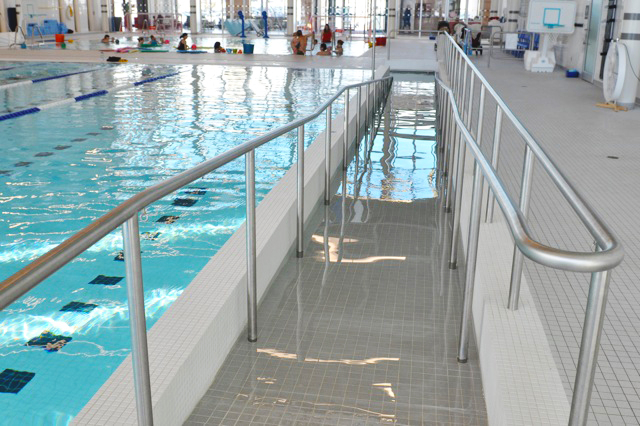
Ramps are one of the most common and effective ways to make a pool more accessible. Pool ramps provide individuals in wheelchairs a safe way to enter/exit the pool while remaining seated. They also provide a gradual entry point equipped with railing support for patrons who may have other mobility constraints. Bathers of all ages and abilities can use these ramps as a method of ingress/egress from the pool.
BEACH ENTRY
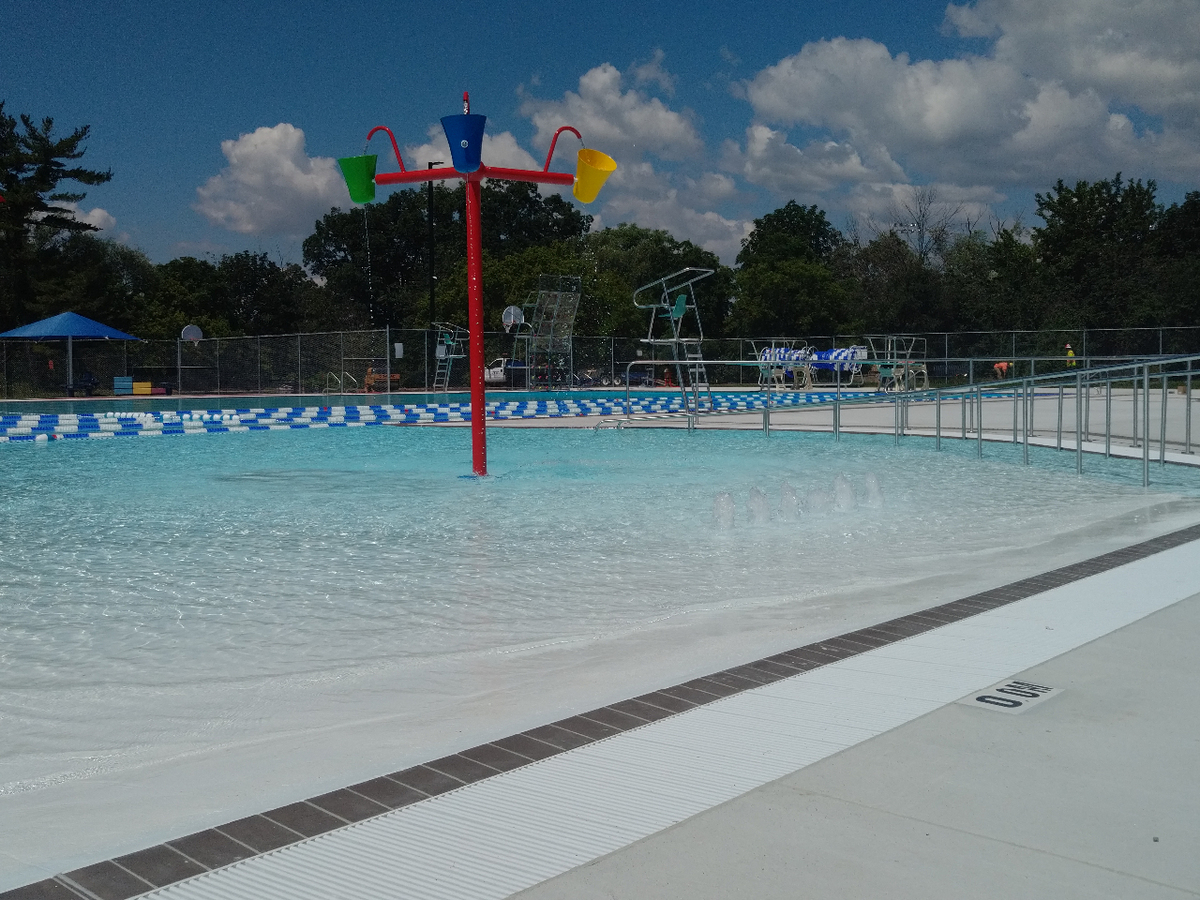
Beach entry, also known as zero entry, is an increasingly popular pool design, especially when it comes to accessibility and overall esthetics. A beach entry provides a gradual slope from the deck into the pool, eliminating the need for steps and/or ladders. The design is similar to a ramp but spans the entire width of the pool.
This design accommodates a wide range of patrons of all ages and abilities. Beach entries are typically integrated into leisure/lap pool combinations and provide a popular access point for the entire family.
TRANSFER WALLS

This pool design comprises a wall or curb along an accessible route to enable a bather to leave a mobility device and transfer onto the wall and then in the pool or spa. Transfer walls must have at least one grab bar; however, in most cases there are two. This type of accessibility feature is common in spas.
BALLET RAILS

Ballet railings are installed along the walls of a pool and, in some cases, in the interior, to provide a hand grip for bathers to hold onto - similar to the railings used by ballet dancers. These railings provide additional support and security for bathers with mobility constraints; however, they are also commonly used for fitness and aerobics. In certain applications, ballet rails can be removed for storage when not in use.
MOVABLE FLOORS
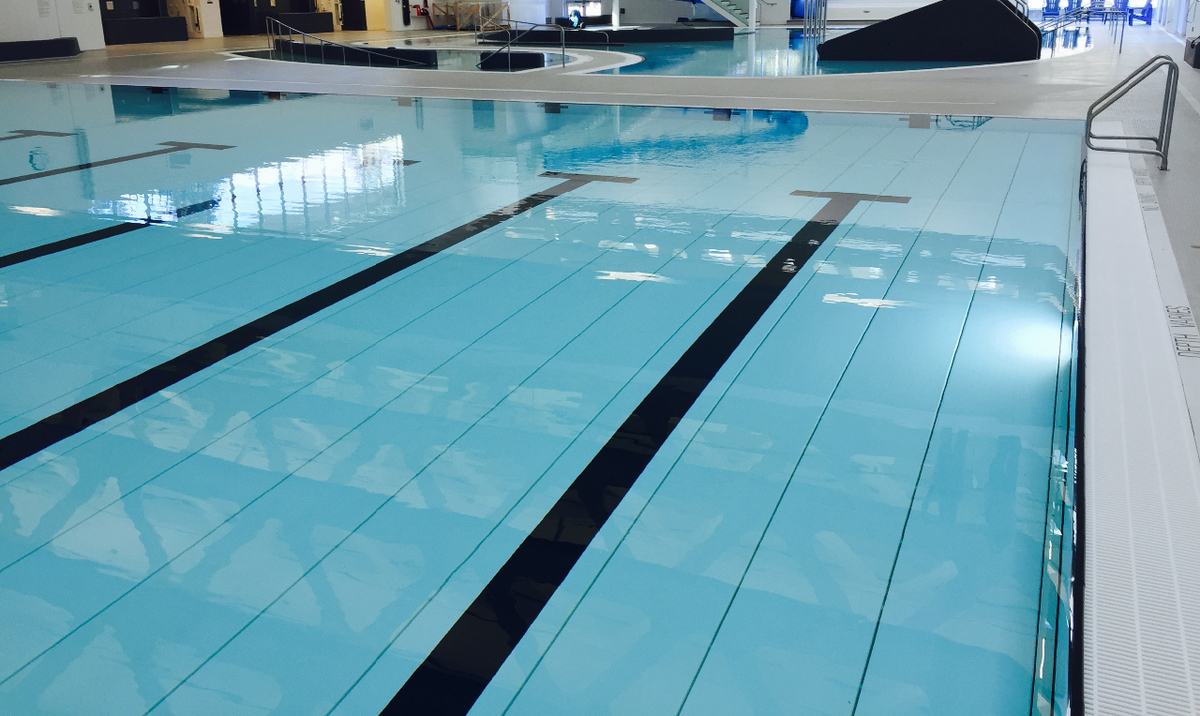
Movable floors give aquatic facilities the ultimate versatility when it comes to accessibility. In fact, a number of public pools in Europe are equipped with these systems, while in North America movable floors are gaining similar traction and are now being incorporated into many aquatic facility designs.
Movable floors can be installed in new construction or retrofitted into existing facilities giving them the ability to offer a range of programming that could not be provided to patrons in the past. While not a lifting device, pools equipped with a movable floor can be set to multiple depths to accommodate the preferences and/or abilities of different patrons. Further, moving floors can also be built with a sloping functionality. This allows the movable floor to become a beach entry or offer a gradual depth change within the pool.
PLATFORM LIFTS

Platform lifts provide the same benefits and ease of entry as a ramp, but in a fraction of the space. These devices, which are typically a small movable floor, allow a patron to remain in their wheelchair or mobility device when entering the pool.
Capable of stopping at one or more depths within the pool, platform lifts have a greater weight capacity than an anchored or portable lift and are powered by either battery or water.
Similar to a ramp or beach entry, these are the only lifts that give the platform autonomy to enter the pool without assistance. These lifts are designed and built as part of the pool and are typically incorporated in the initial plans. Platform lifts are innovative in design and are increasing in popularity compared to older access equipment typically found in most aquatic facilities.
SPLASH PADS
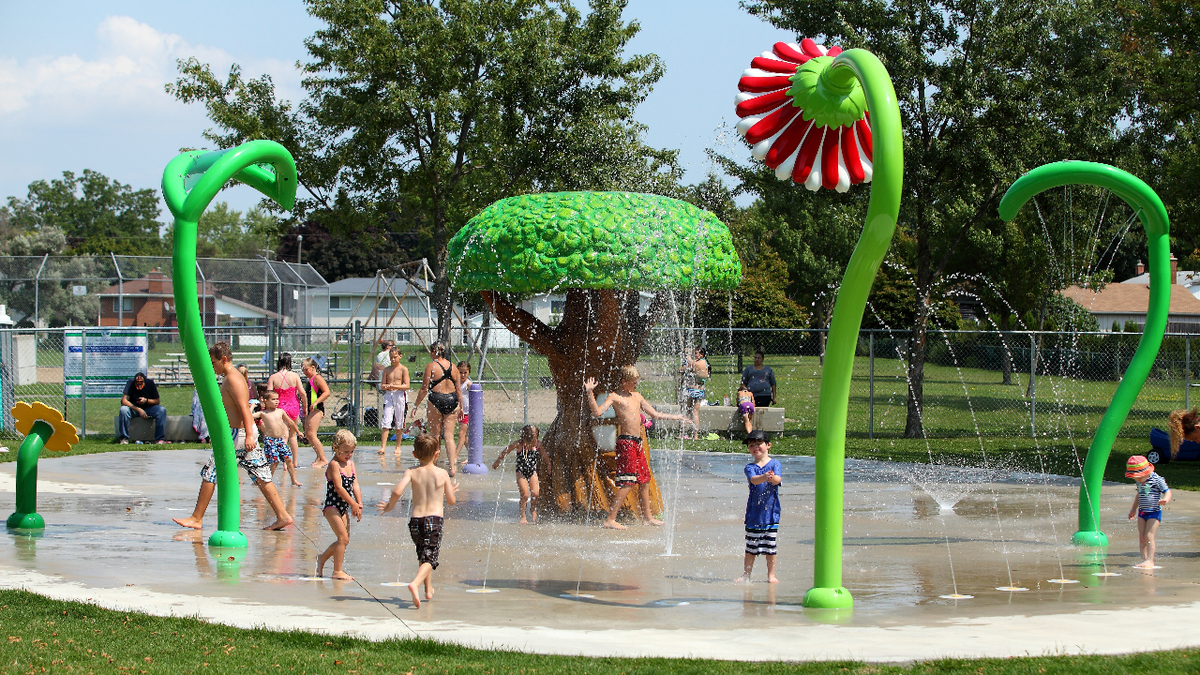
Many people are familiar with splash pads, as they are often found at most public playgrounds and, in some cases, are also part of many aquatic facility designs. These areas have grown in popularity because of their zero-depth water play design. Not only are they safe, but they are universally accessible. Many aquatic facilities will incorporate either an indoor or outdoor splash pad or water play area into the plans.
Along with the barrier-free design of most splash pads, water play manufacturers are also creating a range of interactive features that are available in various sizes to accommodate patrons of all abilities.
Further, all ground space is flush with the concrete, which allows mobility devices to move over and around a splash pad without any difficulty.
ACCESS LIFTS
Access lifts provide an additional means of entry/exit with the ability to transfer a patron from the pool deck directly into the water without using a ramp or stairs. These lifts do not have to be incorporated into the design or construction of the pool, as they can be easily installed after the pool has been built.
There are many different manufacturers and models available, which makes it possible to use these types of pool lifts in most aquatic facilities whether new or existing.
Anchored Lifts
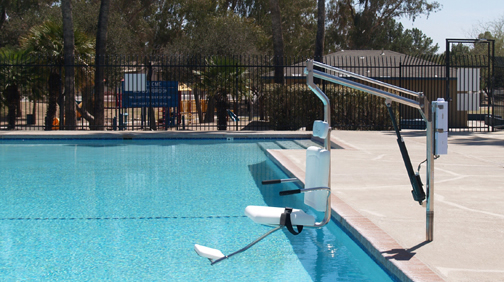
Anchored access lifts are installed into supports mounted around the pool perimeter. These lifts can be easily removed and stored if they are not being used. Most anchored pool access lifts are battery-powered and charged by simply plugging the unit into the wall.
Portable Lifts
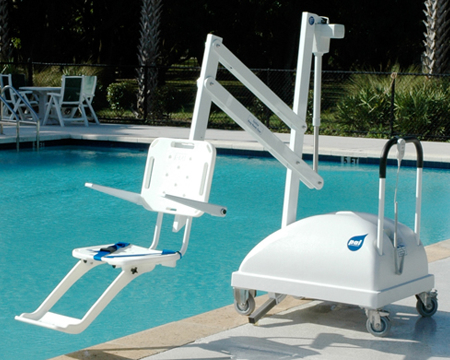
Portable access lifts are similar to anchored lifts; however, they are on wheels and can be used anywhere around the pool as they are not limited by anchor locations in the pool deck. Although portable lifts can be used anywhere, they typically have a lower weight capacity.
Ceiling Lifts
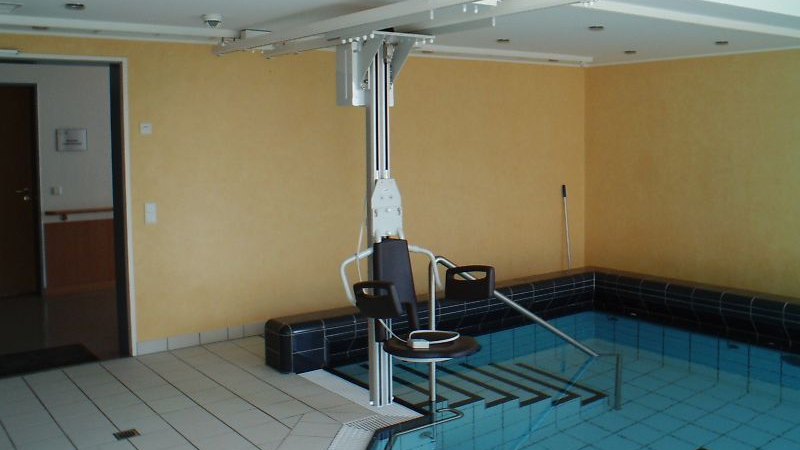
These lifts are installed in the ceiling of an aquatic facility and are typically used when deck space is limited. They also have a larger lifting capacity than a portable or anchored lift. Powered by a battery-operated motor, a ceiling lift can transport patrons-once they are suspended-lateralling along a track system. They are also well-suited for intensive use, e.g. providing access to the pool for a large number of patrons that use wheelchairs. Further, ceiling lifts have a larger lifting capacity than a standard portable or anchored deck lift and are great for pools that have narrow decks which do not permit the installation of an access system.
|











